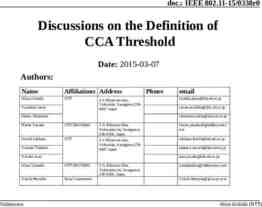PERFORMANCE APPRAISAL
34 Slides1.83 MB
PERFORMANCE APPRAISAL
Performance Appraisal
“Performance appraisal is the systematic evaluation of the individual with respect to his or her performance on the job and his or her potential for development.”
Objectives Work related objectives Career-Development Objectives Communication Organisational Objectives
Features Systematic Process Continuous Process Secure information for correct decision Formal or Informal
Benefits ; Guiding Employees Systematic Periodical evaluation of employee’s performance Basis for the decision regarding salary Useful in deciding promotion and transfer Analyse the training and development needs
Limitation Halo Error Similarity Error Miscellaneous Biases Faulty Assumption Leniency or Strictness Central tendency Psychological blocks
PERFORMANCE APPRASIAL PROCESS
METHODS OF PERFOMANCE APPRAISAL . TRADITIONAL METHODS Traditional approach is also known as traits approach. It is based on the evaluation of traits in a person. This system may list ten to fifteen personal characteristics such as ability to get along with people, competence, judgment, initiative, and leadership etc.
1. CONFIDENTIAL METHOD -Differ from department to department and from level to level. -relates to the performance, ability and character of employees -causal attitude
2. GRAPHIC SCALE METHOD - -A Rating scale lists traits and a range of performance values for each trait is prepared. -These are of two types:i) Characteristics such as initiative and dependability ii) Contribution such as quantity and quality of work.
3. STRAIGHT RANKING METHOD -Every employee is judged as whole without distinguished the rates from his performance. -A list then prepared for ranking the workers in order of their performance on the job.
4.PAIRED COMPARISION METHOD -Every person is compared trait-wise., with other persons, one at a time, the numbers of times one person is compared with others is tailed on a piece of paper. The number of rank order in this would be n(n-2) where n is the number of persons to be compared.
5.GRADING SYSTEM GRDAES MAY BE AS:A-OUTSTANDING B-VERY GOOD C-SATISFACTORY D-AVERAGE E-BELOW AVERAGE
6. FORCED DISTRIBUTION METHOD
7.FREE ESSAY METHOD -Writes a report about the employees CONSIDER FOLLOWINGS FACTORS:1. Job knowledge and potential of the employees 2. Employee’s relation with coworkers 3. Employee’s traits and attitudes 4. Employee’s understanding 5. Development needs for future
8. CHECK LIST METHOD List of statements that describes the characteristics and performance of employees on the job. To indicate whether the behavior of an employee is positive or negative to each statement. THREE TYPES OF CHECK LIST: SIMPLE CHECK LIST WEIGHTED CHECK LIST FORCED CHOICE CHECKLIST
1. SIMPLE CHECK LIST
2.WEIGHTED CHECK LIST Weights are assigned to different statements to indicate their relative importance. TRAITS WEIGHTS 1. REGULARITY 0.5 2. KNOWLEDGE OF JOB 1.0 3. DEPENDABILITY 1.5 4. INTERPERSONAL RELATIONS 2.0 5. LOYALITY 1.5 6. LEADERSHIP POTENTIAL 1.5 PERFORMANCE SCALE RATINGS (1-5)
iii) FORCED CHOICE CHECKLIST -Five statements are given for each trait, two most descriptive statement, two least descriptive and one neutral statement. A SPECIMEN OF FORCED CHOICE CHECKLIST AS FOLLOWS:-
9. GROUP APPRAISAL
10. CRITICAL INCIDENT METHOD 11. FIELD REVIEW METHOD 12. NOMINATIONS 13. WORK SAMPLE TESTS
MODERN METHODS
ASSESSMENT CENTRE:In- Basket exercises , work groups Role playing Computer stimulations
HUMAN RESOURCE ACCOUNTING:Valued in terms of money Performance judgement Cost & contribution Labour productivity
BEHAVIORALLY ANCHORED RATING SCALE (BARS):-
MANAGEMENT BY OBJECTIVES (MB0):-Set the departmental goals -Set the organisations goals -Discuss departmental goals -Define expected results -Performance reviews -Provide feedback
360 DEGREE PERFORMANCE APPRAISAL:Systematic collection of performance Derived from stakeholders Formalised communication links Self development
COMPUTERISED & WEB BASED PERFORMANCE APPRAISAL:-Performance appraisal software programmes -Electronically rating EPM -Computerised data -Sophisticated telephone systems -Both wireless audio & video links
SUGGESTIONS TO IMPROVE PERFORMANCE APPRAISAL Behaviorally Combine On based measures. absolute and relative standards. going feedback. Multiple Selective raters. rating.
Trained appraisers. Peer evaluations. Post appraisal interview. Rewards to accurate appraisers.
ESSENTIALS OF AN EFFECTIVE APPRAISAL SYSTEM Mutual trust and confidence. Reliability. Validity. Specific objectives. Standardisation.
Training to appraisers. Job relatedness. Feedback. Individual differences. Post appraisal interview. Review and appeal.







































